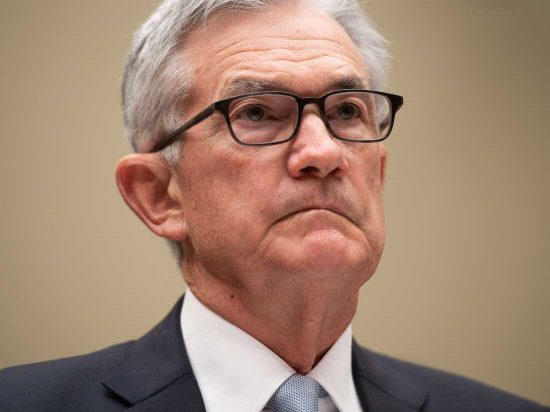ΣΧΕΤΙΚΑ ΑΡΘΡΑ
The first half of 2021, together with the recovery of the global economy from the COVID-19 pandemic, has seen the steel industry recording a strong growth accompanied by an upward market in most goods, with steel prices worldwide at their highest levels over time.
The increasing demand is the one that led to high prices for iron ore, the essential component for the steel industry, resulting in an increase in the prices of the products marketed by the Group.
In this context, SIDMA STEEL recorded strong growth rates in the first half of 2021, both at the group and company level, presenting profitable results.
More specifically, in the first half of the year, the consolidated turnover of SIDMA STEEL Group stood at EUR 106.5 million or 73.8% higher than in the corresponding period of 2020, while, along with the sales of dealerships, it amounted to EUR 130.3 million from EUR 75.9 million, up by 71.7% compared to last year.
The above increases are mainly due to the average sales price, as it increased by 47.1% compared to the previous semester, respectively increasing turnover. Earnings before tax, interest, and amortisation (EBITDA) amounted to EUR 19.068 thousand from EUR 1,841 thousand last year, while profits before tax amounted to EUR 28,290 thousand against losses of EUR 1,768 thousand in the corresponding period last year. The difference in profit or loss before tax is mainly due to operational profitability due to the expanded gross profit margins.
The gross profit rate increased by 166.8%, from 8.1% in the first half of 2020 to 21.6 % this year, while, in absolute terms, gross profit increased by 364% or by EUR 18 million compared to last year, to EUR 23 million.
The remaining amount of the increase in profitability is due to the accounting treatment of the refinancing of the Company’s debt obligations, which was completed on 5 February 2021. Per the requirements of IFRS 9, the new debt obligations were reflected at their fair value, resulting in a decrease of EUR 14.3 million with the corresponding improvement in the Group’s and the Company’s results. The Group’s Equity is now positive and amounts to EUR 12.7 million.
At the Company level, the turnover in the first half of the year was EUR 70.6 million, against EUR 41.3 million, showing an increase of 70.9%, while along with the sales of dealerships, it amounted to EUR 94.4 million from EUR 55.9 million in the corresponding period of 2020, increasing by 68.9%. As at the Group level, the highest rate of increase is due to the rise in sales prices, as mentioned above.
The results before tax, interest, and amortisation (EBITDA) amounted to EUR 14.3 million, from EUR 1.6 million in the corresponding period last year. At the same time, the pre-tax profit was EUR 24.3 million against losses of 1.0 million in the corresponding period last year for the reasons mentioned above. Of the difference of EUR 25 million, about half relates to the operational profitability of the Company and the remainder to the presentation of its new debt obligations in the fair value.
Regarding the subsidiaries, both SIDMA Bulgaria and SIDMA Romania increased their turnover by 81.3% and 76.6%, respectively, compared to the first half of 2020. More specifically, SIDMA Bulgaria’s turnover amounted to EUR 21.9 million against EUR 12.1 million while SIDMA Romania’s was EUR 14.5 million compared to EUR 8.2 million in the first half of 2020.
In terms of the other aggregates of the subsidiaries, SIDMA Bulgaria recorded an increase, in terms of operational profitability (EBITDA) from EUR 236 thousand last year to EUR 2,627 thousand this year, but also in pre-tax results, recording profits of EUR 2,375 thousand this year compared to losses of EUR 58 thousand last year.
At the EBITDA level, SIDMA Romania showed operational profitability of EUR 2.2 million, while at the pre-tax profit level, it showed profits of EUR 1,682 thousand from losses of EUR 704 thousand last year.
The Group’s liquidity increased by EUR 4.2 million or 25% and amounted to EUR 21 million.
Finally, it is worth noting that the combination of the strengthening of Company’s equity, the positive results of the half year and the refinancing of the Company’s loans, which ended in February of this year, dramatically improved the financial ratios of Capital Structure and Interest Coverage. Specifically, on 30/06/2021 the am ratios are as follows:
Net Debt to Equity Ratio = 2.7,
Interest Coverage Ratio (EBITDA / Net Interest) = 7.5.
Objectives and Prospects for the remainder of 2021
For the rest of 2021, as the number of COVID-19 cases started to stabilize and a large part of the vulnerable population was vaccinated, with the overall vaccination rate in Greece close to the EU average, we believe that the domestic economy is expected to maintain its growth momentum, maintaining the demand for steel at high levels.
The growth prospects of the Greek economy have been revised upwards by the European Commission[1], which now forecasts growth of 6.0 % of GDP (compared with 4.2%) for this year, due to the expected further normalization in the second half of 2021, as vaccines are deployed, and there is additional budget support.
According to the report, fiscal measures taken earlier this year, coupled with the push from the country’s Recovery and Resilience Plan, are expected to boost domestic demand, which will be the main driver of growth in both 2021 and 2022. In particular, the investment will be boosted by the Recovery Fund appropriation, of which EUR 4 billion is expected to flow this year to Greece (approximately 2.3 % of GDP) and 5.3 billion in the coming years up to and including 2026. In fact, domestic investment is foreseen to rise by 11.5 % this year and by 20% in 2022, which is expected to contribute further to boosting demand for steel products. As the market leader, SIDMA hopes to benefit from the increased demand for steel products described above.
Fast recovery
Moreover, the European economy is also foreseen to recover faster than previously expected, as activity in the first quarter of the year exceeded expectations and improved health situation led to a faster easing of restrictions to control the pandemic in the second quarter. As in Greece, the Recovery and Resilience Facility (RRF) is expected to contribute significantly to growth in the European economy. The total wealth to be generated by the RRF over the time horizon of the forecasts is expected to reach around 1.2% of the EU’s real GDP.
As regards foreign subsidiaries, Romania’s economy performed strongly in the first quarter of this year, according to the European Commission’s summer report (July 2021[2]). Real GDP grew by 2.8 % compared to the previous quarter, supported mainly by private consumption and investment. Net exports, on the contrary, were significantly negative, reflecting weak external demand and disruptions in the supply chain. On an annual basis, real GDP is projected to increase by 7.4% in 2021 and 4.9 % in 2022. Private consumption is expected to remain very strong, supported by the lifting of restrictions, particularly for sectors severely affected by the pandemic, such as arts, entertainment, restaurants, and hotels, and relatively strong wage growth in the first months of the year. Investment is expected to remain strong, supported by both the private and public sectors. SIDMA Romania closely monitors market developments and is expected to complete the restructuring of its loans and improve its equity within the year.
Respectively, in Bulgaria, despite persistent restrictions on economic activity related to the pandemic, the country’s real GDP increased by 2.5% in the first quarter of 2021 compared to the previous quarter due to exports and private consumption, according to the European Commission’s summer report (European Commission, July 2021[3]). Consumer confidence reached pre-crisis levels in April and May, suggesting further improvement in domestic consumer demand this year. In the second half of the year, household consumption is expected to continue to expand, in line with the improvement in the labour market. Real GDP growth is expected to reach 4.6% in 2021 and 4.1% in 2022.
Regarding the steel market, the WorldSteel Association[4] predicts that world steel demand will increase by 5.8% in 2021 and reach 1,874 billion metric tonnes (mt). Demand will increase further by 2.7% in 2022 and will reach 1,925 billion tonnes. In addition, Eurofer[5] in its latest report in August 2021, the European Steel Association predicts that apparent consumption of steel in the EU is expected to recover in 2021 and return above 2017 levels in 2022 thanks to a continuous increase in demand from steel-using sectors.
It is worth mentioning that the uncertainty and risks surrounding growth prospects – both at the local and regional level – are not negligible but remain balanced overall. The expected fourth wave of the COVID-19 pandemic is likely to affect short-term growth prospects and geopolitical developments that remain among the biggest challenges for the Greek economy. The important thing, however, is that all analysts and economic agents adopt in their basic scenarios the optimistic estimates for the evolution of growth rates for the rest of the year and in 2022. And this is, without a doubt, good news for Company and the Group.
ΕΙΔΗΣΕΙΣ ΣΗΜΕΡΑ
- Η Κεραμέως και η επιστροφή των πτυχιούχων
- Απίστευτο: Το 0,2% των οφειλετών χρωστάει 83 δις! – Σχεδόν 6 στα 10 ευρώ είναι απλήρωτες οφειλές στην εφορία
- Η δημόσια πρόταση της Masdar, η ρευστότητα 220 εκατ. ευρώ και η μετοχή της ΓΕΚ ΤΕΡΝΑ
- Ποιοι παίζουν για ΠτΔ, η εμπιστοσύνη στα ΕΛΠΕ, το bid της Masdar και η ΓΕΚ ΤΕΡΝΑ, οι δύο εφοπλιστές και το bad-mouth, ο καταδικασμένος Σταύρος Τάκη, οι δωρεές του Δένδια, το καλό mood του Νικολάου και της Χρυσής Β, και η παρακολούθηση της πλατινομαλλούσας












